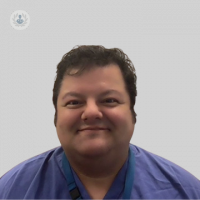Surgery for osteoarthritis: What to do before and after
Autore:In this informative guide for patients, highly respected consultant trauma and orthopaedic surgeon Mr Jose Blanco shares his expert insight on how to best prepare for osteoarthritis surgery and the importance of maintaining activity levels. The revered specialist also sheds light on what to expect from the period following surgery and the positive impact of good preparation on the recovery process.

How should I prepare for my osteoarthritis surgical procedure?
There are three key things that I would really recommend for patients preparing to undergo surgery for osteoarthritis.
My first recommendation for patients is to try and minimise their weight as the evidence of the benefits of doing so is really overwhelming. Losing excess weight helps to reduce the risks of complications from surgery, ranging from blood clots and infections through to ongoing pain and instability symptoms or problems with ligaments.
Another area which is very valuable is optimising other comorbidities by making sure that your medications are up-to-date, your blood pressure is well controlled and that any chronic conditions are well managed. A lot of my practice is based around suggestions from the anaesthetic and pre-assessment teams with the aim to minimise any risks. This type of surgery is elective and so we have to bring any modifiable risk factors tightly under control to make sure that everything runs as smoothly possible on the day itself as well as in the immediate recovery period.
The final key area is mobility. I’ve spoken previously about the importance of physiotherapy and there has been a big movement in the arthroplasty world towards prehab, (i.e. prehabilitation). The idea of prehab is to optimise the patient’s condition from a physiotherapy or musculoskeletal point of view to make the operation itself a little bit easier, as well as the recovery, which is especially beneficial in knee replacements.
The most sensitive factor in determining post-operative function and range of motion is actually pre-operative function and range of motion. For this reason, long delays and big waiting lists for treatment can start to accumulate harm over time so we need to get people to their surgery at the right time as that plays a really important role in controlling the final outcome.
Should I be exercising while preparing for surgery?
Absolutely, yes. Exercise is really valuable for patients preparing for surgery and to make this possible, there are a number of available options to help to control pain. As maintaining function is so vital, it is definitely better to have more pain relief if it maintains the function of your joint and enables you to continue with a good level of activity. Whether it’s walking a few miles or simply being able to complete your physiotherapy exercises, the more you’re able to do prior to the surgery, the better the outcome will be.
What should patients expect from the post-operative period?
It’s really important to say that the post-operative period is incredibly variable and each patient will experience different initial episodes of swelling and severities of pain. This is dependent on the patient themselves, how complex the surgery was and all sorts of other factors.
Normally we have a follow-up appointment around six weeks following the surgery after the wound has been reviewed to ensure that everything is satisfactory. At that six week mark, we often see patients walking into the clinic room with just one stick having discarded the crutches indoors and using just one for support while outside in an uncertain environment. On the other hand, some people may still be coming in a wheelchair because the distance from the car park to the clinic room is just a little bit too much and that is also okay. At the other end of the spectrum, an increasing number of patients return their crutches to us at this appointment, as they no longer feel the need to use them at all. These patients will be ready to start driving and returning to all of their normal activities at this stage.
There’s a really good evidence base to show that knee replacements take longer to settle down while hip replacements tend to improve a little bit faster. With any replacement surgery, however, it can take as long as a year to make a full recovery with minimal swelling. I generally tell patients that they can start driving at the six week mark if they’re progressing well and they’re able to perform an emergency stop and control the car. When returning to driving, it’s important to inform your insurance company that you’ve undergone surgery. Every case is different but this is a general and common rehabilitation plan. It’s important to stress that the more work you do beforehand, even though rehabilitation will be still required after surgery, the recovery will be much quicker and smoother.
You can read more of Mr Blanco’s expert insight on the conservative measures used to manage osteoarthritis and when surgery is indicated in his other informative article on the condition.
If you require treatment for osteoarthritis and wish to schedule a consultation with Mr Blanco, you can do so by visiting his Top Doctors profile.


